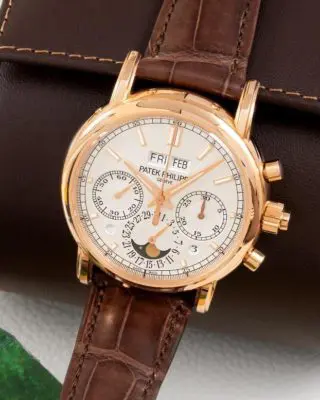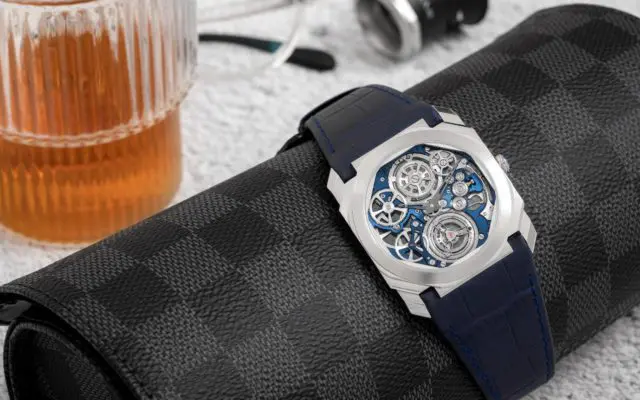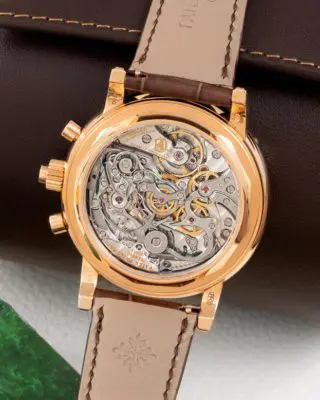Navigating the landscape of pre-owned luxury watches can be a complex endeavour, fraught with potential pitfalls. However, armed with the right knowledge and guidance, you can make informed decisions that lead to rewarding acquisitions.
In this comprehensive guide, we will delve into the intricacies of purchasing a pre-owned luxury watch and provide insightful tips on its subsequent care.
Understanding the Allure of Pre-Owned Luxury Watches
Luxury watches are more than just timekeepers; they’re masterpieces, status symbols, and smart investments. Many of them keep or even boost their value over time, especially certain pre-owned and vintage models. Plus, these pre-loved gems often come with a friendlier price tag than brand-new ones, letting you make the most of your budget. The best part? The biggest drop in value has already happened, thanks to the first owner.
Looking for rare or popular models? The pre-owned market is your playground! You can find a wide range of luxury watches in Singapore at today’s prices, no need for a long-standing relationship with a store. Dive in and find the perfect luxury watch for you.
The Booming Market of Pre-Owned Watches
The pre-owned watch market is experiencing unprecedented growth, presenting savvy buyers with opportunities to snag fantastic deals and make solid investments. However, the market also has its share of pitfalls and unscrupulous sellers. Always verify authenticity and inspect the condition of the watch thoroughly. If something seems off on which luxury watch should I buy, don’t hesitate to seek advice from an expert or simply step away from the deal.

Guidelines for Purchasing a Second-Hand Watch
1. Exercise Caution with Pricing
Ensure that you have a clear budget and a good understanding of the type of watch you desire. Research market values of similar watches in comparable conditions to gauge if a deal is too good to be true. Extremely low prices should raise red flags as they could indicate counterfeit products, stolen goods, or items in poor condition. Unethical sellers might attempt to pass off used watches as brand new to an unsuspecting buyer.
2. Inspect the Watch’s Condition
Evaluate the watch for signs of wear, damage, or over-polishing. Ensure all parts, especially the bracelet and its components, are original and in good condition. Be wary of ‘’Frankenstein watches’’ – watches with non-original parts – and seek transparency from the seller regarding any replacements or repairs done.
While examining the watch, make sure to do so under white diffused lighting since warm lighting can obscure scratches. Employing an eye loupe for a close inspection is ideal, but if that’s not accessible, the zoom function on your smartphone’s camera can serve as a suitable alternative.
3. Consider the Importance of Provenance
While having the original box and papers adds to the authenticity and value of the watch, their absence doesn’t necessarily mean the watch is counterfeit. Assess how important these items are to you and how their presence (or lack thereof) affects the price.
Don’t forget, if you intend to sell your watch later on, you might face the challenge of locating a buyer interested in acquiring an incomplete set.
4. Focus on the Seller’s Reputation
The reputation of the seller is paramount. Look into their online presence, check for verified reviews, and assess their activity on social media platforms. A physical showroom where you can inspect the watch in person is a plus, but if that’s not an option, ensure there are comprehensive photos available, and don’t hesitate to request specific proofs of possession from the seller.
Be wary when dealing with arbitrage traders, as they frequently advertise or share images of watches that are not physically in their possession. In some cases, they may not have personally inspected the watch at all, casting doubt on the quality control measures in place. Numerous variables are at risk in such transactions, and establishing accountability can be complex when issues arise, particularly since the dealer’s role is merely to facilitate the trade.
5. Test the Watch’s Functionality
If buying in person, insist on inspecting the watch yourself. Check the smoothness of the crown, movement of the hands, and the functioning of bezels. Utilize tools like the Timegrapher app to assess the watch’s timekeeping accuracy.
Make sure to thoroughly check every feature of the watch to confirm that it’s all working correctly. For instance, if you’re looking at a day-date watch, take the time to rotate the crown and cycle through all the days and dates to verify that everything aligns properly and there are no irregular jumps or discrepancies.
6. Inquire about the Service History
Like a classic car, a luxury watch should come with a detailed service history, indicating that it has been cared for by professionals, ideally by the manufacturer or authorized service centres. When it comes to luxury watches, it’s essential to consider the top 10 luxury watch brands, ensuring you invest in a timepiece that not only looks exquisite but is also backed by a legacy of craftsmanship and quality
7. Factor in Maintenance Costs
Older watches may require more frequent and costly maintenance. Depending on the brand and complication, some watch servicing may be more accessible or costly compared to others. The cost of upkeep should be factored into your budget.
Moreover, keep in mind that the older a watch is, the more expensive its maintenance can become, particularly due to the scarcity of replacement parts. For collectors of vintage watches, it’s important to note that a watch’s value could potentially decrease if it has been serviced with newer replacement parts.
8. Scrutinize Warranty and Returns Policies
Only engage with sellers who offer clear warranty and returns policies. Any reputable seller should be willing to stand behind the authenticity and condition of their products.


